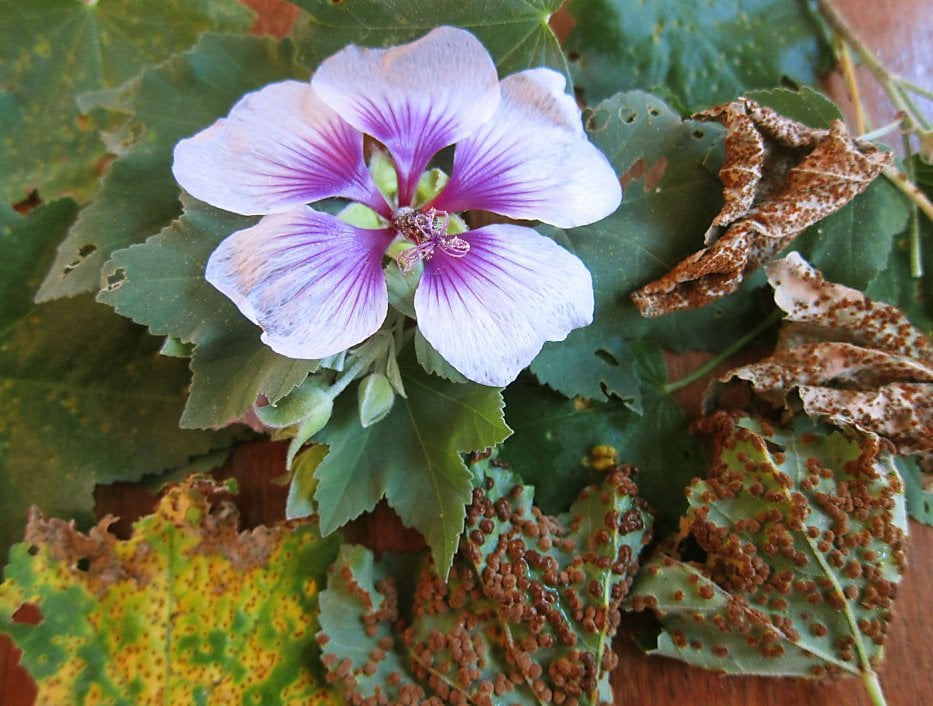Table of Contents
Lavatera bushes have a limited lifespan yet develop very fast. Their life may be prolonged, and their impressive flower displays can be maximized with rigorous yearly pruning. Lavatera pruning is one of the first tasks to complete in the garden in the early to mid-spring, ideally after the risk of harsh frost has passed.
The family Malvacea includes the genus Lavatera. Mallow is the surname that is often used. Twenty species comprise the genus. Lavatera has been discovered in Russia, the United States, Australia, and Europe.
They frequently grow on rocky, poor soil in coastal areas in their native habitat. Because of this, the root zone often has free-draining conditions, which you should imitate while using Lavatera in your garden for tremendous benefits. Lavatera is the perfect plant to grow in your garden, but Lavatera problems are also there, which should be kept in mind before pruning it.
Lavatera Varieties You Can Grow
Several common lavatera species are as follows:
1. Lavatera Assurgentiflora
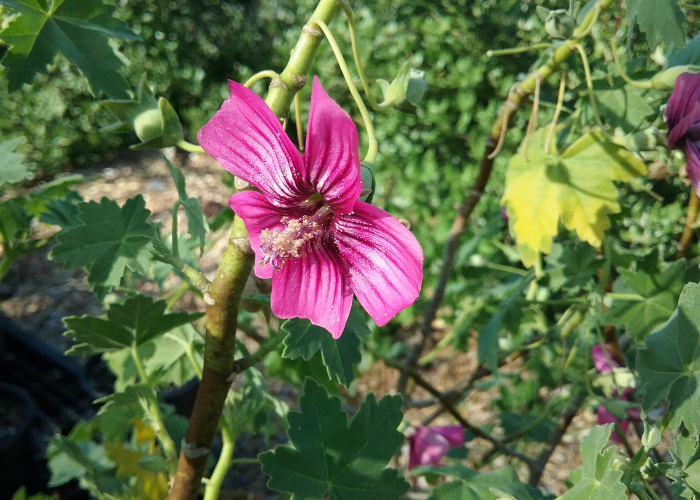
Lavatera assurgentiflora, often known as the island mallow or malva rose, has striped purple and white blooms and has a somewhat distinct appearance from other lavatera species’ more hibiscus-like blossoms. The plant, indigenous to the Channel Islands, may grow up to 10 feet tall and become evergreen in areas with a lot of salt spray.
2. Lavatera Thuringia
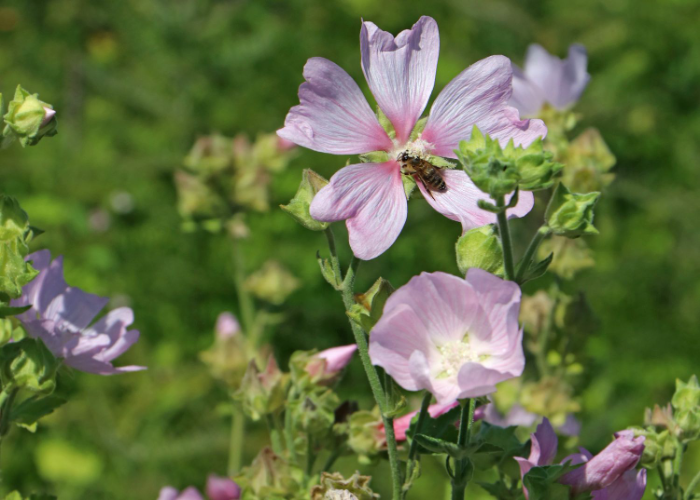
In warm areas, tree mallow (Lavatera Thuringia), a woody shrub, may be cultivated as a perennial. Tree mallow is best established in spring; however, it can likewise be found in fall, particularly in regions where the colder time of year environment is gentle. Tree mallow adjusts impeccably to being filled in pots or nursery boxes. Exceptionally solid, it opposes low temperatures to 5°F (- 15°C).
3. Lavatera x Clementi
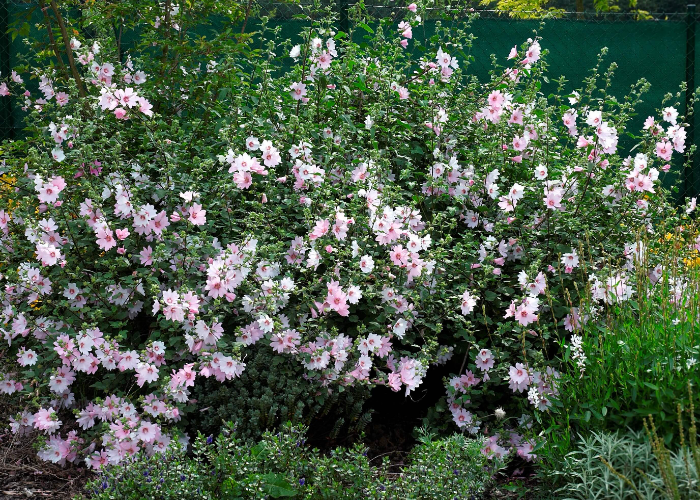
Compact perennial lavatera ‘Barnsley Baby’ (Lavatera x Clementi) for small gardens and pots with light pink blooms with a rose-pink centre. Barnsley Child’ is a spectacular lavatera and a bantam assortment of an exemplary bungalow garden number one, reared to be extensively more modest than its standard family members.
4. Lavatera Trimestris
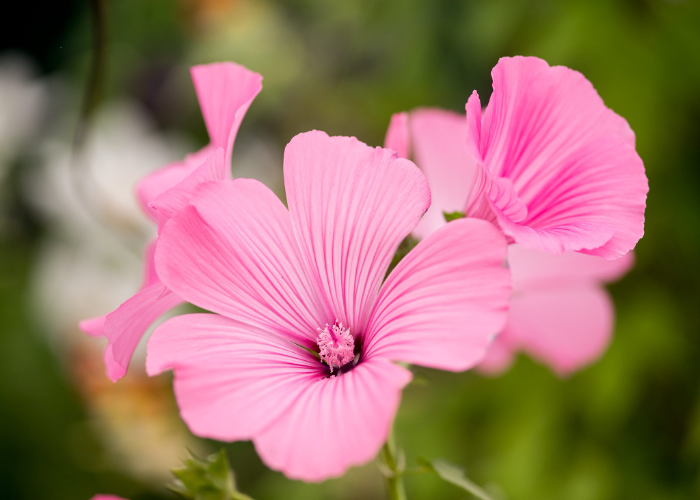
It is a shrubby annual with saucer-shaped, white to pink blooms, rose mallow (Lavatera trimestris), and can reach three to six feet. Blossoms open for a long time in mid-summer. Enormous fluffy leaves and a shrublike structure give this plant significant mass in the scene. Plants, by and large, break lethargy late in spring, so show restraint.
Lavatera Problems that Arise During the Cultivation
Lavateras are solid and trouble-free plants you may cultivate in your yard. However, many varieties can be vulnerable to a range of fungal Lavatera problems, such as:
1. Rusty Lavatera
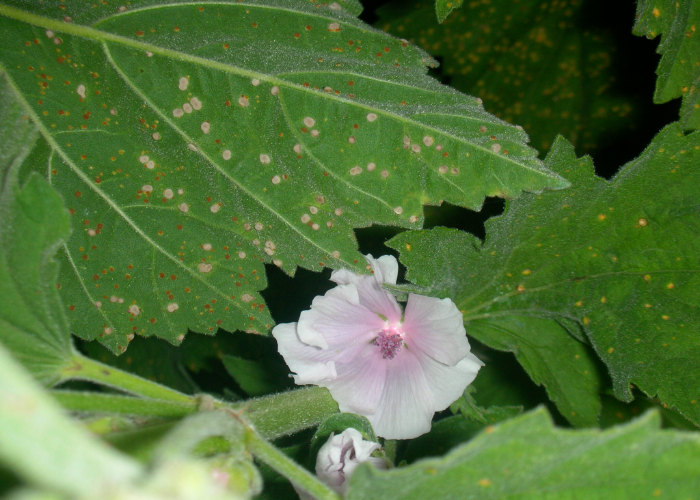
Many plants in the Malvaceae plant family can be affected by rust. Various common fungal infections known as rusts may affect plants. Rust can reduce a plant’s vitality and can be ugly. Due to lavatera rust, bumps appear on the plant’s leaves and other surfaces. And the case may be stopped by promptly removing and discarding sick leaves. If rust is expected, keep your lavatera as healthy as possible. Ensure fertility, avoid using too much nitrogen fertilizer, and continuously grow organically. Also, make sure there is enough water, but only a little. Rust frequently appears on the underside of the leaves and resembles dried mustard sprinkling on the plants. The upper surface of the leaf will start to appear beige to yellow spots as the fungal rust spreads. If the infection is not treated, the entire plant will get it, losing its leaves, developing a spongy stem, and finally dying.
From early spring through the end of the season, you can spray the plants with an all-purpose systemic action fungicide every two weeks. Remember that these fungicides will harm bees that visit the blossoms and the plant’s pollen and nectar.
2. Leaf Spot Illness
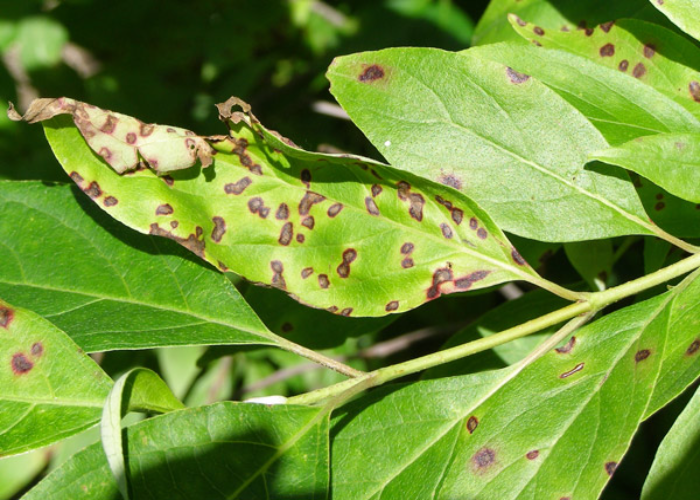
The widespread bacterial illness known as “leaf spot” affects many plants. The disease often causes symptoms on the surface of the leaf and can be caused by any of the 120 species of bacteria or fungi that have been identified. The leaves get irregular patches with yellow edges and brown or black blemishes. This Lavatera problem creates sporadic dots that become black and spread until the leaves wither. This illness weakens Lavatera because it affects the leaves, which are crucial for photosynthesis. Remove the diseased areas and treat the plant with the proper fungicide to aid in its recovery. Cut the plant at least once a year to increase airflow and prevent reoccurring fungal infections.
3. A Powdery Mold
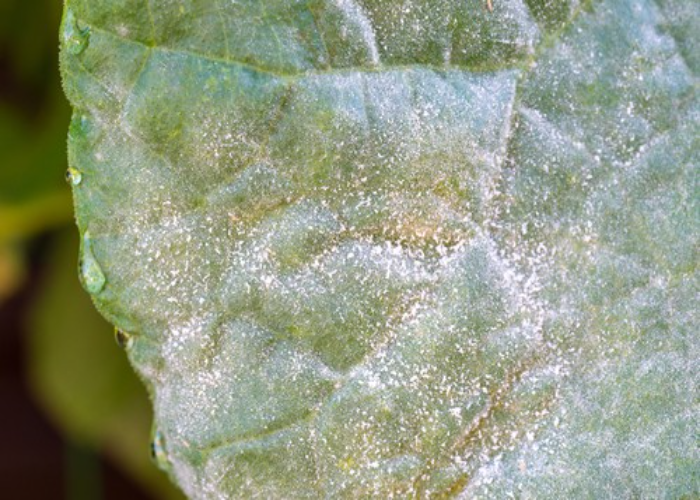
Powdery mildew is a common disease that can harm your Lavatera and causes white, soft spots on the leaf. It is a tiny fungus that grows best in warm, humid settings and weakens plants if left untreated. The removal of the affected areas and the application of fungicides are part of the therapy for powdery mildew. To save your plant from this Lavatera problem, always plant it in a sunny location to keep any spores dormant and maintain the plants well-ventilated. At the first indications of mildew, I advise applying a fungicide and removing the afflicted leaves.
4. Blight from Phytophthora
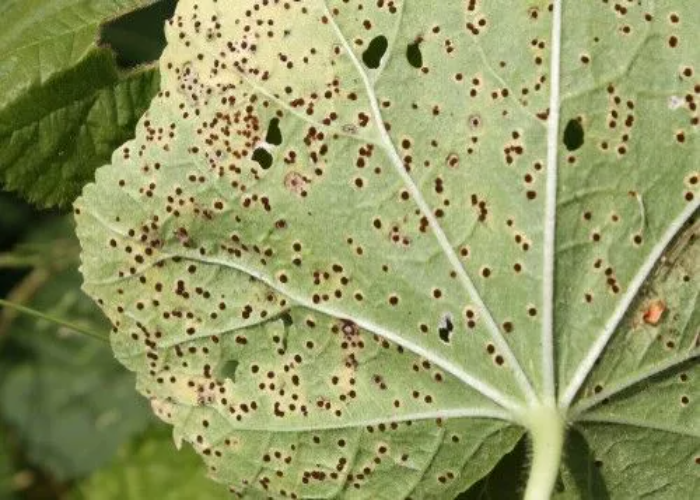
Phytophthora blight, which can result in irreversible harm if left unchecked, is brought on by Phytophthora capsici. The pathogen damages plants in soils with excess water because it prefers high humidity levels. It starts from the roots of the plants and spreads to the stems and leaves. Plants infected by phytophthora blight are challenging to preserve because the roots have sustained significant damage. No pharmaceutical intervention is available to treat this condition, which is fatal to Fungicidesngicides will be helpful as a prophylactic straight beneficial to preventative spreading. It should be immediately removed so sick plants are thrown in the trash to prevent infecting the other plants.
How to Care Lavetra?
1. Light
When given the right conditions, Lavatera is simple to cultivate. Planting Lavatera in full sun will produce more blooms and more potent plants. It’s prone to flopping when grown in the shade. Some dye may be advantageous in warmer locations to assist the plant in staying cool during hot summers.
2. Water and Soil
Lavatera loves evenly wet, well-drained soil. The plant may rot if the ground is left damp. It is drought tolerant after the plant has been established, although it is preferable to avoid letting the soil dry entirely.
3. Temperature
Lavatera dislikes summer heat and humidity. To thrive, it needs warm, dry weather. Climates that are mild or temperate are preferable to Lavatera plants. They dislike both extremes of temperature. They fall dormant during the winter. In USDA growth zones 7 and 10, they can exist.
4. Fertilizer
Slow-release granular fertilizer should be incorporated into the soil before planting. Apply a liquid floral fertilizer as directed in the middle of the summer. Avoid overfertilizing to avoid having more foliage and fewer blooms.
5. Pruning
Springtime is the perfect time to trim perennial Lavatera. After the final spring frost, trim it back by a third or half. On the development of the current year, prune damaged branches.
6. Lavatera Repotting and Potting
Lavatera is a fantastic option for outdoor container gardening. Pick a container with good drainage, then add potting soil or a soil/compost mix to it. The plant kind determines the container size. For the plant, the container should be adequate but not excessively large. Lavatera has an issue with damp soil caused by large containers. Repotting is usually optional. Lavatera dislikes having its roots uprooted.
7. Intolerances
Lavatera plants are often relaxed. The most crucial thing to remember is that they are not tolerant of blocked or rich soils, although they are relatively simple to avoid!
What Functions Does a Lavatera Plant Serve?
Lavavtera plant mainly function or are primarily used under two categories-
1. Decorative Plant
You couldn’t ask for a finer blooming plant. The lavatera plant tolerates drought well. They received the Royal Horticultural Society’s Garden Merit Award! They are frequently cultivated in garden beds, mixed borders, and (as long as they’re of the smaller kinds) as patio container plants. They work well in all flowerbed gardens, including those in cities, on the seaside, in cottages, and wherever you imagine. They are also excellent cut flowers.
2. Creature Ecology
Lavatera plants also play an essential role in the neighbourhood environment, another cool feature! Beautiful, aromatic flowers in the region draw a variety of valuable pollinators, including bees and wasps, as well as other insects. Due to their spectacular blossoms, they are a well-liked option for companion planting and can transform your ordinary garden into a butterfly paradise.
Benefits of Lavatera for Health
1. Lavatera Is Used Medicinally
The plant contains antiphlogistic, astringent, demulcent, diuretic, emollient, expectorant, laxative, and salve properties in all sections. You may make tea out of the roots, flowers, or leaves, or you can consume the leaves and flowers as part of your diet. The significant components utilized are the leaves and blossoms, which have demulcent characteristics that make them helpful as a poultice for bruises, inflammations, bug bites, etc. They may also be eaten orally to treat disorders of the digestive tract and the respiratory system. It makes an excellent medicine for coughs and other chest conditions when coupled with eucalyptus.
2. Lavatera Edible Elements Include
Raw or cooked leaves. They are tasty and blend well as a thickening in soups since they are mucilaginous and have a mild, pleasant taste. Also, a perfect lettuce alternative in a salad, the young leaves are—raw, immature seeds. The seeds may be nibbled on and have a pleasant nutty flavour, although they are difficult for most people to collect in large quantities. Raw flowers. Garnished or included in salads. They offer an excellent and attractive touch to the salad bowl with their mild flavour and texture comparable to the leaves. The leaves can be used in place of tea.
Final Thoughts
In conclusion, the referenced Lavatera problems are there when you want to establish them in your nursery. Yet, if you deal with these plants, the problems will not emerge. Lavatera plants produce blooms that resemble miniature hollyhock blossoms or hibiscus blossoms, giving the garden a romantic feel.
Lavatera is covered with a profusion of jewel-toned flowers. Lavatera has colours that are pink, purple, and white; however, it lacks the hollyhocks’ extensive range of hues. Many flowers also include beautiful deeper tonal striations; others have black spots in the middle of the blossoms. Midsummer is when Lavatera’s blossoming season starts and it lasts until the first frost.
No matter where it is planted in the garden, Lavatera demands attention when its stems are covered in blooms.

